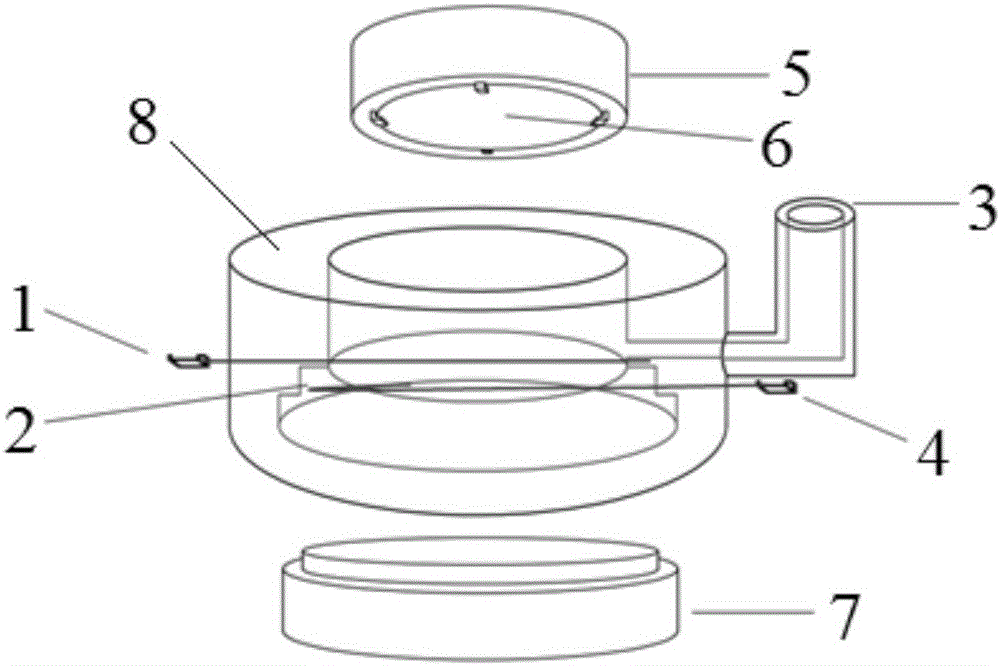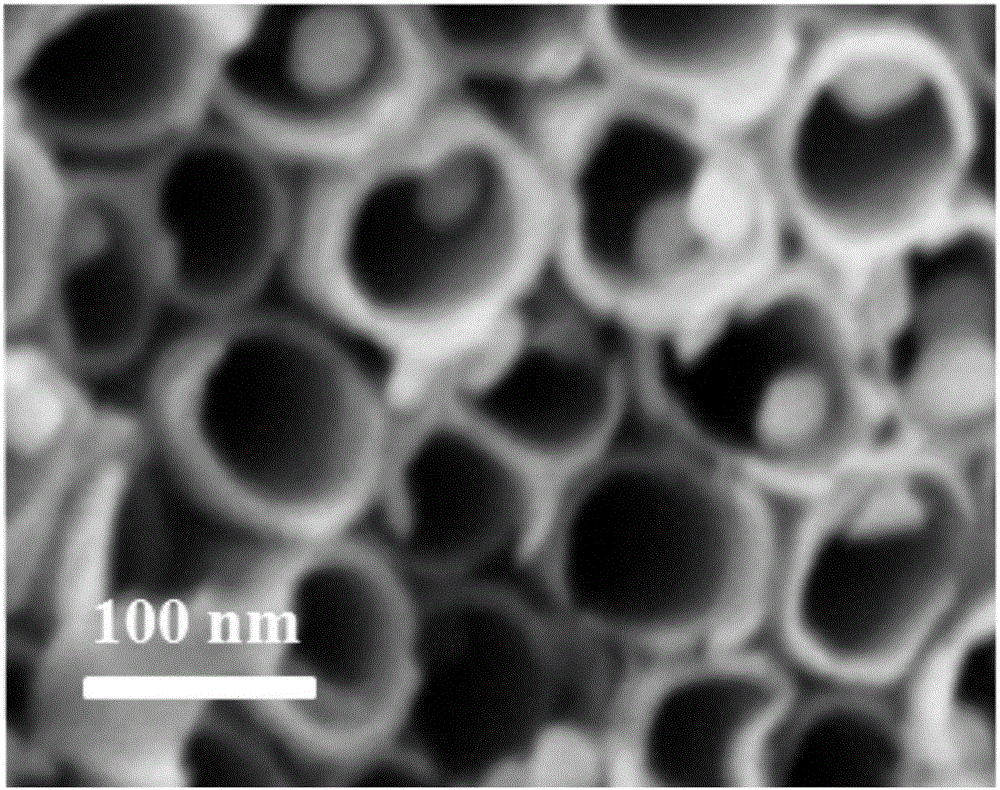In-situ surface-enhanced Raman spectroscopy system and application thereof
A surface-enhanced Raman and spectroscopic system technology, applied in the field of spectroelectrochemistry, can solve the problems of single surface-enhanced Raman substrate and inability to modify electrodes, and achieve good photocatalytic performance, good light transmission performance, and broad application prospects.
- Summary
- Abstract
- Description
- Claims
- Application Information
AI Technical Summary
Problems solved by technology
Method used
Image
Examples
Embodiment 1
[0036] 1) TiO 2 Preparation of NTs / Ti electrode: Grind the titanium plate and sonicate for five minutes according to water, ethanol, and water respectively, at V(HCl):V(H 2 (O)=1:1 etch for 10min until the solution turns purple. then in NH 4 F is oxidized at a constant potential (30V) in an ethylene glycol solution, and after cleaning, it is heated in a tube furnace at 500°C for 3 hours to obtain TiO 2 array of nanotubes.
[0037] 2) Preparation of AuNPs / TiO by cyclic voltammetry 2 On NTs / Ti electrode: Potential -0.9V~0V, Pt wire as counter electrode, saturated calomel electrode as reference electrode, AuNPs / TiO 2 NTs / Ti is the working electrode, at 2mmol L -1 HAuCl 4 and 0.1mol L -1 Preparation of AuNPs / TiO by Cycling Different Numbers of Cycles in KCl Solution 2 NTs / Ti electrode, the final cycle of 15 cycles can get the electrode with good photocatalytic performance and surface-enhanced Raman performance. The scanning electron microscope picture is as follows figur...
Embodiment 2
[0040] Prepare AuNPs / TiO in Example 1 2 NTs / Ti electrode, in-situ photocatalytic degradation of organic pollutant p-nitroaniline on the electrode surface: Take 2mL containing 0.1mol L -1 Na 2 SO 4 Electrolyte, the concentration is 10 -4 mol L -1 The aqueous solution of p-nitroaniline is injected into the electrolytic cell through the reference adapter. Using Pt wire as the counter electrode, AuNPs / TiO 2 The NTs / Ti electrode is used as the anode, and the Ag / AgCl electrode is used as the reference electrode. The effective photoanode area is 4.5cm 2 , adjust the Raman spectrometer to focus on the electrode surface. Under the irradiation of ultraviolet light with a wavelength of 365nm and a power of 5W, a bias voltage of 0.6V was applied to continuously measure the surface-enhanced Raman spectrum of the degradation process of p-nitroaniline, and analyze its presence in AuNPs / TiO 2 Photocatalytic degradation process on NTs / Ti electrode surface. From Figure 4 It can be se...
Embodiment 3
[0042] Take 2mL concentration as 10 -4 mol L -1 The p-nitroaniline solution is injected into the electrolytic cell through the reference adapter. Using Pt wire as the counter electrode, AuNPs / TiO 2 The NTs / Ti electrode is used as the anode, and the Ag / AgCl electrode is used as the reference electrode. The effective photoanode area is 4.5cm 2 , adjust the Raman spectrometer to focus on the electrode surface. Under the irradiation of ultraviolet light with a wavelength of 365nm and a power of 5W, the surface-enhanced Raman spectrum of the degradation process of p-nitroaniline was continuously measured, and its concentration in AuNPs / TiO 2 Photocatalytic degradation process on NTs / Ti electrode surface.
PUM
| Property | Measurement | Unit |
|---|---|---|
| wavelength | aaaaa | aaaaa |
Abstract
Description
Claims
Application Information
 Login to View More
Login to View More - R&D
- Intellectual Property
- Life Sciences
- Materials
- Tech Scout
- Unparalleled Data Quality
- Higher Quality Content
- 60% Fewer Hallucinations
Browse by: Latest US Patents, China's latest patents, Technical Efficacy Thesaurus, Application Domain, Technology Topic, Popular Technical Reports.
© 2025 PatSnap. All rights reserved.Legal|Privacy policy|Modern Slavery Act Transparency Statement|Sitemap|About US| Contact US: help@patsnap.com



